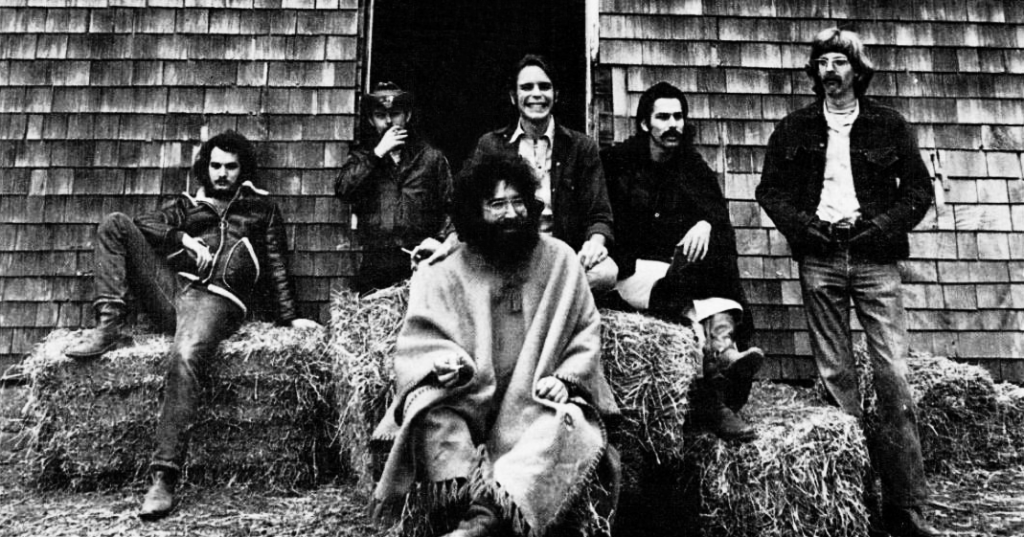[Most Recent Entries] [Calendar View]
Friday, September 13th, 2024
| Time | Event |
| 4:56a | Stanford Continuing Studies Offering an Online Course Exploring the Music of the Grateful Dead
A quick heads up: On October 3rd, Stanford Continuing Studies will kick off an 8‑week online course called Did It Matter? Does It Now? The Music and Culture of the Grateful Dead. Led by David Gans (author of Playing in the Band: An Oral and Visual Portrait of the Grateful Dead), the course will feature a number of special guests, including Jesse Jarnow (host of The Good Ol’ Grateful Deadcast), Dennis McNally (author of A Long Strange Trip: The Inside History of the Grateful Dead) and David Lemieux (Grateful Dead Archivist). Open to any adult, the course description reads:
Again, the course starts on Thursday, October 3rd. Tuition is $465. You can enroll here. Stanford Continuing Studies also offers many other courses online, across many disciplines, at a reasonable price. Check out the catalogue here. Related Content Stream a Massive Archive of Grateful Dead Concerts from 1965–1995 When the Grateful Dead Played at the Egyptian Pyramids, in the Shadow of the Sphinx (1978) |
| 9:00a | How a 16th-Century Explorer’s Sailing Ship Worked: An Animated Video Takes You on a Comprehensive Tour These days, it feels as if you can’t go very long at all before scrolling past another announcement about some new technological development (realized or scheduled) related to space exploration. Some react to this by wondering what could possibly be out there in the universe to justify such enormously capital- and research-intensive projects. Centuries ago, similar sentiments were no doubt voiced about the more adventurous kinds of seafaring. In the new Animagraffs video above, you can see all that went into the construction and equipment of a sixteenth-century explorer’s sailing ship in great detail, from the keel to the fish davit. The particular ship you see broken down into its constituent parts in this video never actually existed. But it may look familiar, especially if you’ve seen the reconstruction in London of Golden Hind, the galleon in which Francis Drake circumnavigated the world in the fifteen-seventies. The video’s creator Jacob O’Neal drew a good deal of inspiration from that particular ship, but also incorporated other characteristics borrowed from the Mary Rose, the Mayflower, Sweden’s Vassa, and various Spanish galleons of what we now regard as “the early age of sail, when ships began to cross the globe instead of merely following coastlines or crossing internal bodies of water.” However advanced a model it would’ve been in its day, this ship could only make a long transoceanic journey so comfortable for its crew of 80 or so, most of whom would’ve been sleeping on mats, subsisting primarily on bread and beer (rationed at one gallon per man per day), and using rudimentary outdoor toilets. Presumably, few would have signed up for such a trial if not for the promise of bringing riches back from distant lands — supplemented, in the particular case of the Golden Hind, by “unofficially sanctioned piracy of Spanish galleons.” We have here, in other words, a variety of pirate ship, the vehicle for swashbuckling adventures fantasized about by generations upon generations of youngsters. I myself never dreamed of piracy, but I do remember the rapturous giddiness with which my first-grade class reacted to learning about the sailing ship’s “poop deck.” O’Neal doesn’t neglect that component, but nor does he dwell on it, having many more important parts to explain and contextualize in 40 minutes. To get an idea of how dramatically ships evolved as the age of sail progressed, have a look at his hit video on the eighteenth-century HMS Victory just above. Though the age of space exploration seems to have yet to begin in earnest, some of us are no doubt already psyching ourselves up to climb into the modern equivalent of the Golden Hind for the 34-month trip to Mars. Related Content: See the Well-Preserved Wreckage of Ernest Shackleton’s Ship Endurance Found in Antarctica Watch the Sinking of the Lusitania Animated in Real Time (1915) 16th-Century Japanese Historians Describe the Oddness of Meeting the First Europeans They Ever Saw How an Ancient Roman Shipwreck Could Explain the Universe Based in Seoul, Colin Marshall writes and broadcasts on cities, language, and culture. His projects include the Substack newsletter Books on Cities and the book The Stateless City: a Walk through 21st-Century Los Angeles. Follow him on Twitter at @colinmarshall or on Facebook.
|
| << Previous Day |
2024/09/13 [Calendar] |
Next Day >> |


